


xxxxxThe Prussian victory over the French at the Battle of Sedan in September 1870 did not bring an immediate end to the war. In Paris the Third Republic was declared and the city, totally surrounded, prepared for a defiant stand. A Government of National Defence was also set up. This raised over thirty military divisions in the provinces aimed at relieving the capital, but these were poorly equipped and trained, and proved no match for the Prussians and their German allies. Paris too was eventually forced to surrender in January 1871 after undergoing three weeks of heavy bombardment. In the meantime, at their headquarters at Versailles, Kaiser Wilhelm I received the allegiance of all the German states, and the Unification of Germany was achieved. At the Treaty of Frankfurt in May, the newly elected French republican government had to cede Alsace and part of Lorraine to Prussia, and was forced to pay a huge indemnity. In the meanwhile, under its leader Alphonse Thiers, it had to deal with a rebellion in Paris, where republicans and socialists, opposed to the armistice, set up The Paris Commune, their own municipal government. This was ruthlessly crushed after a two-
THE SIEGE OF PARIS:
SEPTEMBER 1870 -
Acknowledgements
Siege of Paris: an imaginative portrayal by the French painter Jean-
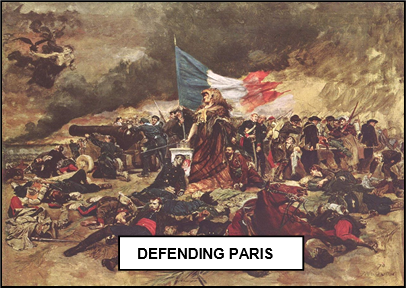 xxxxxAs we have seen, in September 1870 the French Empire of Napoleon III was overthrown following the Prussian victory at the Battle of Sedan. However, the fighting continued. Republicans in Paris declared the Third Republic, and the capital was made ready for a defiant stand. AxGovernment of National Defence was established, and the following month the newly appointed war minister, Leon Gambetta (1838-
xxxxxAs we have seen, in September 1870 the French Empire of Napoleon III was overthrown following the Prussian victory at the Battle of Sedan. However, the fighting continued. Republicans in Paris declared the Third Republic, and the capital was made ready for a defiant stand. AxGovernment of National Defence was established, and the following month the newly appointed war minister, Leon Gambetta (1838-
xxxxxOver the next few weeks more than thirty military divisions were hurriedly assembled to go to the relief of the capital but, poorly trained and ill-
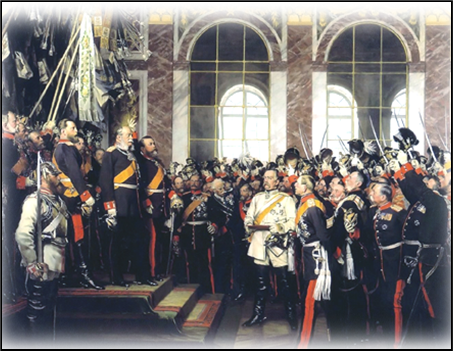
 xxxxxMeantime,, whilst Paris suffered, Bismarck wasted no time in completing the Unification of Germany under Prussian leadership, a union begun in the Austro-
xxxxxMeantime,, whilst Paris suffered, Bismarck wasted no time in completing the Unification of Germany under Prussian leadership, a union begun in the Austro-
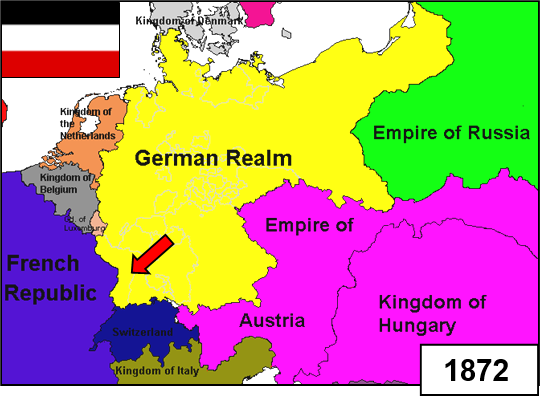
xxxxxIncidentally, the unification of Germany set in motion the Three Emperors’ League, formed the following year (1872) to protect the conservative governments of Austro-
xxxxxThe Franco-
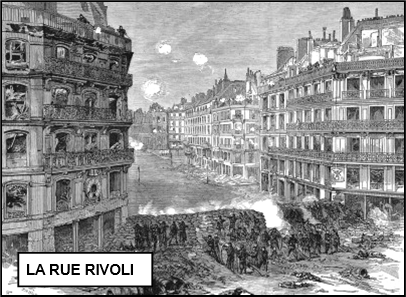 xxxxxBut whilst, as it might be assumed, the surrender of Paris at the end of January 1871 and the Treaty of Frankfurt that followed, marked an end to the fighting, it was not to be. The new French government, elected the following month, was faced almost at once with a serious revolt within the capital, -
xxxxxBut whilst, as it might be assumed, the surrender of Paris at the end of January 1871 and the Treaty of Frankfurt that followed, marked an end to the fighting, it was not to be. The new French government, elected the following month, was faced almost at once with a serious revolt within the capital, -
 xxxxxBy May the republican government, fearing that it faced a grass-
xxxxxBy May the republican government, fearing that it faced a grass-
xxxxxThe Paris Commune, regarded by some as the first socialist government in history, and, as we have seen (1867), optimistically hailed by Karl Marx as communist inspired, did put forward a series of social reforms during its brief existence -
xxxxxIn January 1875, with the monarchists bitterly divided as to the right candidate for the throne, the constitution of the Third Republic was established. This was seen by many as a temporary arrangement, but after the monarchists failed in their bid to seize power in 1877, the republicans grew in number and gained control of the Senate in January 1879. After much trial and tribulation France had settled upon its future form of government, come what may.
xxxxxIncidentally, a poignant short story entitled La Dernière Classe, written by the French author Alphonse Daudet, and published as part of his Lettres de Mon Moulin (Letters from My Mill), is set in a school in Alsace in 1871. The Germans are about to take over all the schools in the province, and the last class to be held in French -
xxxxx…… Thexfear of an invasion of England following the Prussian victory over the French, though never deep rooted or widespread, was heightened in 1871 with the publication of The Battle of Dorking. Written by George Tomkyns Chesney (1830-
xxxxx…… So acute was the shortage of food during the siege of Paris that people were forced to eat any animals they could find, including horses, dogs, cats and rats. The city zoo was also raided. Apart from lions, tigers and monkeys, all the animals were slaughtered, including Castor and Pollux, the only p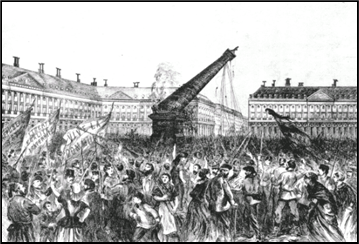 air of elephants. ……
air of elephants. ……
xxxxx…… On 16th May, during the Paris Commune, the Vendôme Column -
Including:
Unification of Germany,
The Treaty of Frankfurt,
and The Paris Commune

Vb-


